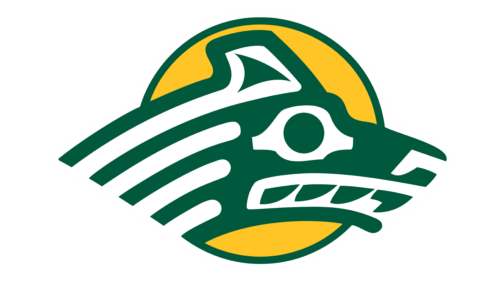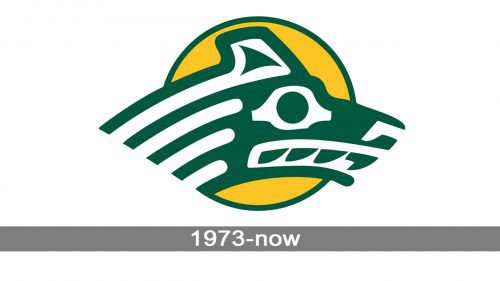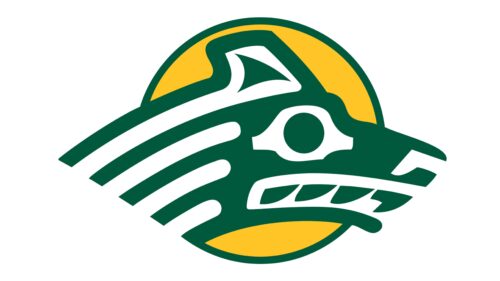

The athletic program from the University of Alaska Anchorage, the Seawolves, is composed of 13 men’s and women’s teams, which compete in the second division of the National Collegiate Athletic Association, as a part of the Great Northwest Athletic Conference. The only three teams of the program, which are members of the first division of the NCAA are gymnastics, skiing, and hockey. Same as with the sports disciplines, the visual identity of the Seawolves accents the cultural heritage of the region — the logo of the program is inspired by the Tlingit Indian art style.


To begin with, let’s explain the word “Seawolf.” This word, referring to a mythical sea creature, was borrowed from stories of the Tlingit Indian tribes coming from Southeast Alaska.
Before 1997, the university’s athletic program was known under the name of the Sourdoughs. The original logo featured a smiling goldpanner.


In 1977, the teams adopted the Seawolf logo. As the Tlingit myth doesn’t give us a precise idea of what a seawolf could look like, the designer made it look like a lizard. Lee Picard, who was UAA Vice Chancellor back then, mentioned he liked the idea of a lizard.
The following update, which took place in 1980, looked more like a real wolf, although the lower part of its body was not that of a wolf, but a sea wave.
In 1985, the team introduced its current emblem, which was created by Clark Mishler Associates of Anchorage for $7,000. While the updated Alaska Anchorage Seawolves logo was obviously inspired by the original 1977 emblem, it looked more minimalistic and professional. At the same time, it preserved a clear connection with the Tlingit art style.